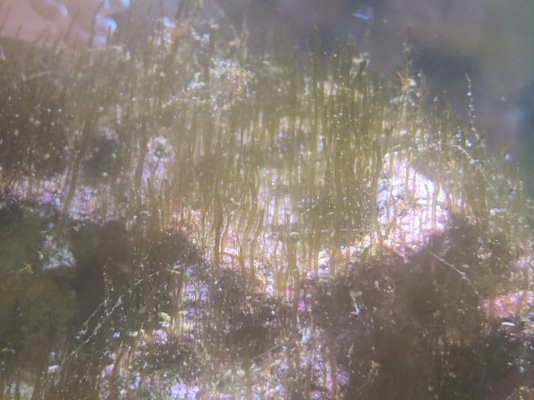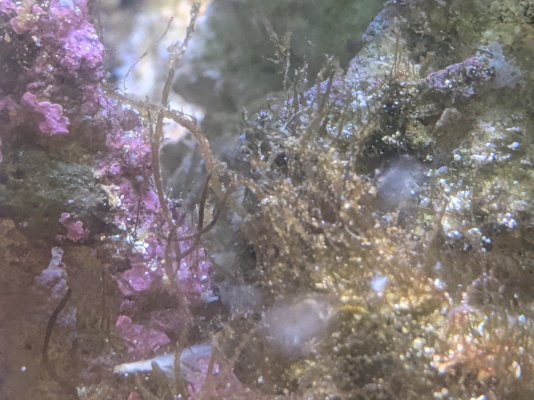I have been fighting hair algae/dino/diatoms ect in this tank and am making some headway and am going further into getting things set up to get my tank in much better condition (uv, new bacteria regime, replenishing my copepod population, change of light bulbs and shorter photoperiod). My parameters have been great for months (had an issue with very high phosphates which really fueled my problem for a while) but now I am faced with a whole new problem. There is a new algae that most likely got through QT unnoticed on my frag and is causing havoc. Nothing in my tank will eat it. It looks just like chaetomorpha but attaches to the rock. It grows very densely trapping debris and when I remove it manually if I press down it feels like I'm popping a bubble. It has now spread through most of my aquascape. I was considering pulling the rock out, scrubbing them and putting them in a sealed 5 gallon buckets with water (to keep micro biome somewhat alive). But I have no idea how long the algae can survive without light and therefore don't want to stress my tank out without any real benefit.
Does anyone have any ideas on how to get rid of something like this?
Does anyone have any ideas on how to get rid of something like this?





















